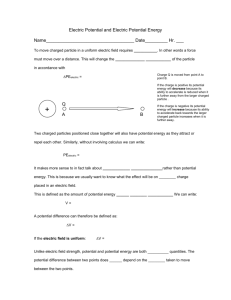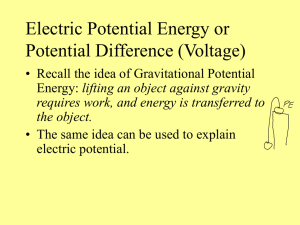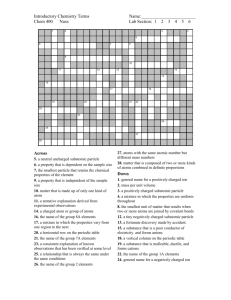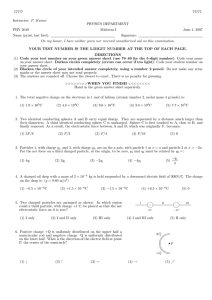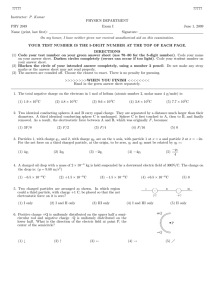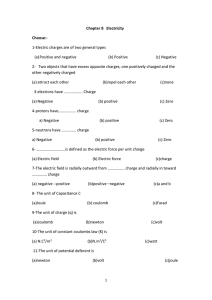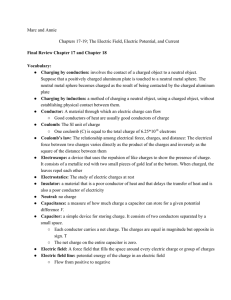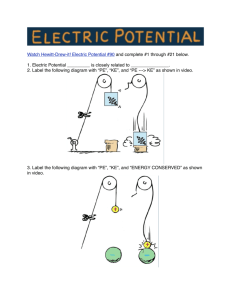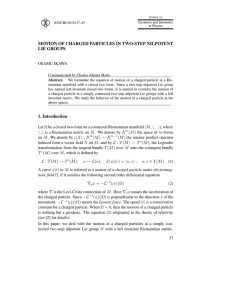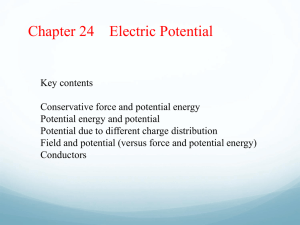Chapter 33 Review Questions
advertisement
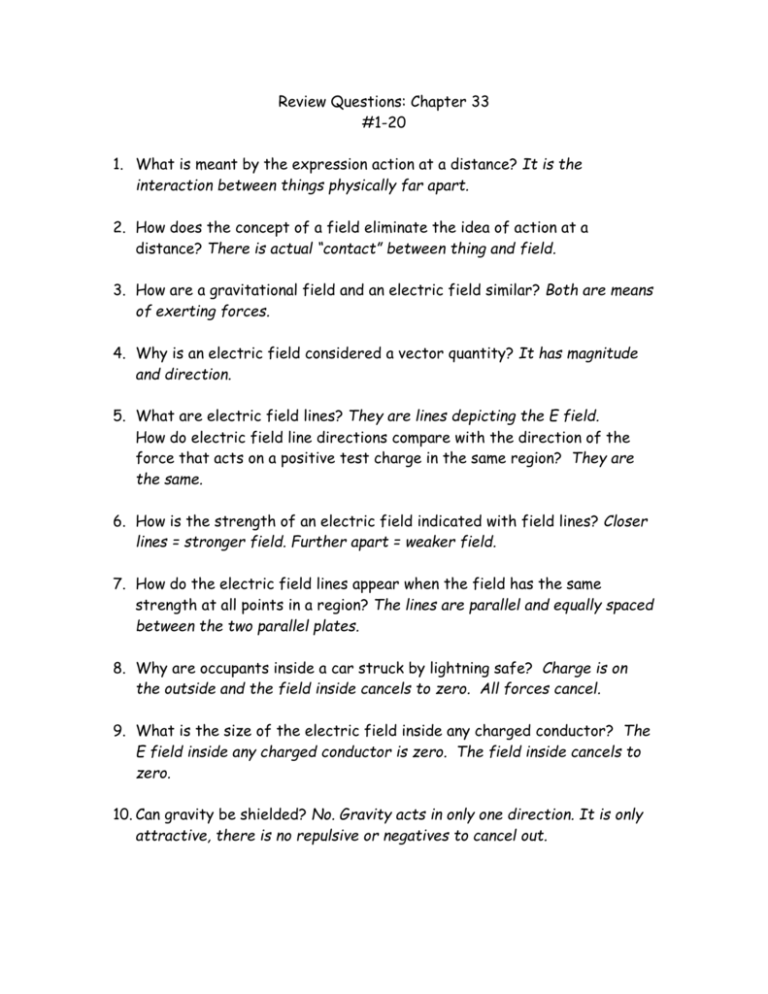
Review Questions: Chapter 33 #1-20 1. What is meant by the expression action at a distance? It is the interaction between things physically far apart. 2. How does the concept of a field eliminate the idea of action at a distance? There is actual “contact” between thing and field. 3. How are a gravitational field and an electric field similar? Both are means of exerting forces. 4. Why is an electric field considered a vector quantity? It has magnitude and direction. 5. What are electric field lines? They are lines depicting the E field. How do electric field line directions compare with the direction of the force that acts on a positive test charge in the same region? They are the same. 6. How is the strength of an electric field indicated with field lines? Closer lines = stronger field. Further apart = weaker field. 7. How do the electric field lines appear when the field has the same strength at all points in a region? The lines are parallel and equally spaced between the two parallel plates. 8. Why are occupants inside a car struck by lightning safe? Charge is on the outside and the field inside cancels to zero. All forces cancel. 9. What is the size of the electric field inside any charged conductor? The E field inside any charged conductor is zero. The field inside cancels to zero. 10. Can gravity be shielded? No. Gravity acts in only one direction. It is only attractive, there is no repulsive or negatives to cancel out. 11. What is the relationship between the amount of work you do on an object and its potential energy? Work = PE 12. How can the electric potential energy of a charged particle in an electric field be increased? You can increase the electric potential energy by doing work on it against an electric field. 13. What will happen to the electric potential energy of a charged particle in an electric field when the particle is released and free to move? The PE will convert into KE. Energy of motion. 14. Clearly distinguish between electric potential energy and electric potential. Electric potential = electric PE/charge 15. If you do more work to move more charge a certain distance against an electric field, and increase the electric potential energy as a result, why do you not also increase the electric potential? There is more J per more C. You do more work on more charge. j/c = J/C = same voltage 16. The SI unit for electric potential energy is the joule. What is the SI unit for electric potential? V = volt = 1 Joule/coulomb 17. Charge must be present at a location in order for there to be electric potential energy. Must charge also be present at a location for there to be electric potential. No, electric potential = PE/charge as if a test charge were present. Independent of charge. 18. How can electric potential be high when electric potential energy is relatively low? Ratio can be high when charge is small. 19. How does the amount of charge on the inside surface of the sphere of a charged Van de Graaff generator compare with the amount of the outside? None on the inside, all charge repels to outside. 20. How much voltage can be built up on the Van de Graaff generator of 1 m radius before electrical discharge occurs through the air? About 3 million volts.
